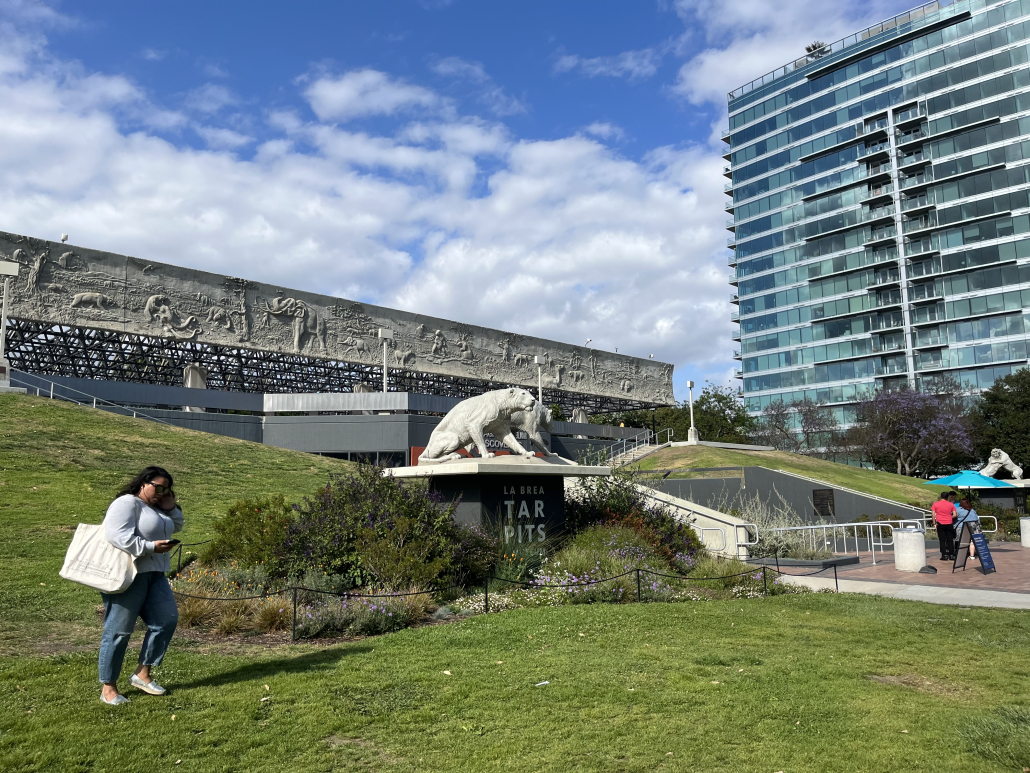La Brea Tar Pits awarded new distinction

Upon arriving at the La Brea Tar Pits, visitors are greeted by a penetrating asphalt smell from a sinkhole. Within the sinkhole lies a recreation of a mammoth being trapped in tar, an illustrative introduction to the history and collections of the museum. Inside, huge skeletons of creatures such as saber-toothed cats, mammoths and mastodons reveal a glimpse of life from the Ice Age.
The museum was recently selected as one of the most important geological heritage sites by the International Union of Geological Sciences. This museum, one of the three Natural History Museums of Los Angeles County, is the world’s only active urban Ice Age fossil dig site, is a 20-minute drive from the University Park Campus and is free for all USC students with a USC student ID.
When Frank Corsetti, professor of earth sciences, heard the news of this distinction granted to the La Brea Tar Pits, he said that the museum deserved to be recognized.
“It really is an absolutely world class deposit that happens to be right in the middle of downtown Los Angeles,” Corsetti said. “It’s a common conception that when you think about going to find fossils, you’re going off to some mountaintop in some remote area, not driving down Wilshire.”
The La Brea Tar Pits is an active fossil dig site, where plants and animals from the last 50,000 years are discovered every day. In the outdoor space, excavators carve fossils out of the asphalt; inside the museum, visitors can look through glass windows into the Fossil Lab, a space where volunteers and scientists clean and conserve fossils that were discovered in the pits.
When reflecting on the distinction in a global context, Hank Woolley, a doctoral student studying earth sciences, said he thought the distinction came at an ideal time for the institution given their upcoming plans to renovate and update the museum.
“It’s really special that they have this really cool international recognition, on par with other UNESCO world heritage sites,” Wooley said. “These places have exceptional fossil preservation, so it’s all good news for the Tar Pits.”
While most consider the La Brea Tar Pits a tourist attraction, earth scientists like Corsetti view it as a scientific goldmine.
“In vertebrate paleontology, when you are looking at the larger animals, typically, you don’t have a lot of fossil material. If you’re lucky, you’ve got two or three leg bones. You go to the La Brea Tar Pits and you can find hundreds, if not thousands of those same fossils,” Corsetti said. “It allows the scientists to do things they wouldn’t be able to do under a regular fossilization circumstance where you only have one or two [fossils].”
Students at USC visit the pits through the “The History of Life on Earth: A View from the Museum” course, a general education class in which one of the labs includes a trip to the La Brea Tar Pits. According to Corsetti, students have the opportunity to see each step of the fossil collecting process here — they can go out to the active digging site, to the fossil lab where they are prepared and then wander the site looking for specific fossils.
Kiersten Formoso, a doctoral student studying earth sciences, makes regular trips to the La Brea Tar Pits and said she considers the museum “one of [her] favorite areas to hang out, once you get past the smell of the natural asphalt.”
“It is not just a dead site; there is still asphalt that seeps up out of the grass,” Formoso said. “If you go there, there are little green cones everywhere because new sticky tar is seeping up from the ground.”
The La Brea Tar Pits serves not only as an incredible site for tourists, but as a community fixture for Angelenos as well. Excavation at the museum occurs daily, at sites open for visitors to see.
“What makes [the La Brea Tar Pits] truly special is that you can go and watch a live fossil excavation for free and talk to the scientists right there … in Hancock Park,” Woolley said. “Not only are you going to the site where all of these animals got stuck and died … there’s very few places in the world where you can do that.”

